Lake Titicaca shares both a Peruvian and Bolivian border. It is also the world’s highest lake at 3500m. There are numerous islands in the lake offering stunning views of the lake that could double as an ocean. It is also home to the Uros people, a pre-incan civilization that still lives like they did in the old days. Deep into the lake, the Uros people live on floating islands made of living reeds.
After many days in Cusco and its surrounding areas, it was time to head down to Bolivia. There are direct flights from Cusco to La Paz on Pervuain Airways but we elected to journey by bus as this would allow us to visit Lake Titicaca.
This post is a part of my two week Peru and Bolivia travel itinerary where I was able to visit the highlights of both countries!
Bolivia Hop From Cusco to La Paz
After some great hiking around Machu Picchu, Bolivia was our next destination. The plan was to take a bus from Cusco to La Paz so we could spend some time at Lake Titicaca. I wanted a bus that would stop in Lake Titicaca so we could see some of the sights, including Puno and Copacabana, as opposed to just going straight to La Paz.

How Bolivia Hop Works
Bolivia Hop is a hop on hop off bus and tour company with regular buses from Cusco to La Paz. They make stops in Puno, a town on the Peruvian side of Lake Titicaca, and Copacabana, the Bolivian equivalent.
You’re allowed to “hop off” in either one of these locations and stay as long as you’d like. The guides on board will even help you book hostels and whatnot. The buses come once a day so when you’re ready to resume your trip, simply hop on the next bus that comes.
For those that do not want to stay a few nights, like me, Bolivia Hop will stop in Puno and Copacabana long enough to allow you time to do short tours of the Lake.

It’s geared more towards backpackers but overall it did what it said it would do and got me to La Paz when I needed it. The buses were not very nice. Certainly not to the standard of the famed South American sleeper buses I’ve grown accustomed to.
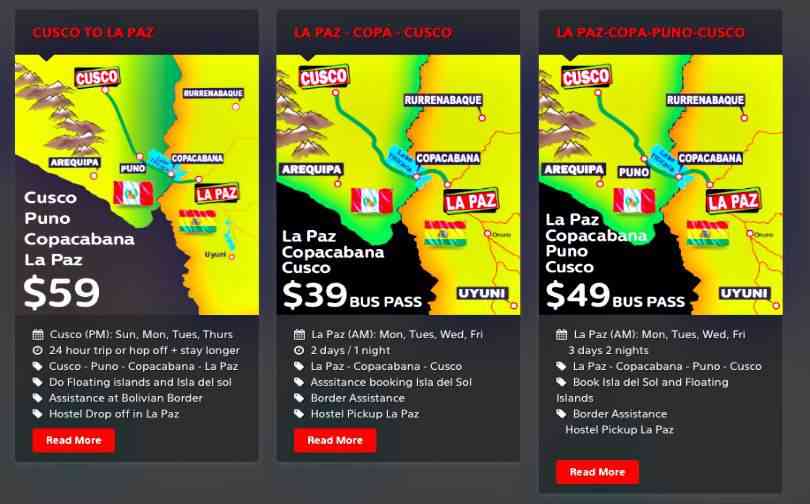
In addition to the tour prices above, the short tours in Puno and Copacabana are $10/30 soles per tour. In total, I paid $79 for the entire trip.
My Bolivia Hop Itinerary
- Monday
- 10:30pm: Meet at Bolivia Hop bus station in Cusco and depart
- Tuesday
- 6am: Arrive Puno
- 6:30am-9am: Uros Islands Tour
- 9-11am: Puno to Peru-Bolivia border
- 11-12: Cross border (Bolivia is 1 hour ahead)
- 1:30pm: Arrive in Copacabana
- 1:30-4:30: Isla Del Sol Tour
- 5pm-11pm: Copacabana to La Paz (with a short stop for dinner)
Puno, Lake Titicaca
Our bus departed Cusco at 10:30pm. After a long night on the bus, we arrived in Puno around 6am the following morning. Puno is the main town on Lake Titicaca with ample amounts of restaurants, bars, and tours. We had a quick breakfast here before walking to the docks and embarking on our morning tour of the reed islands.
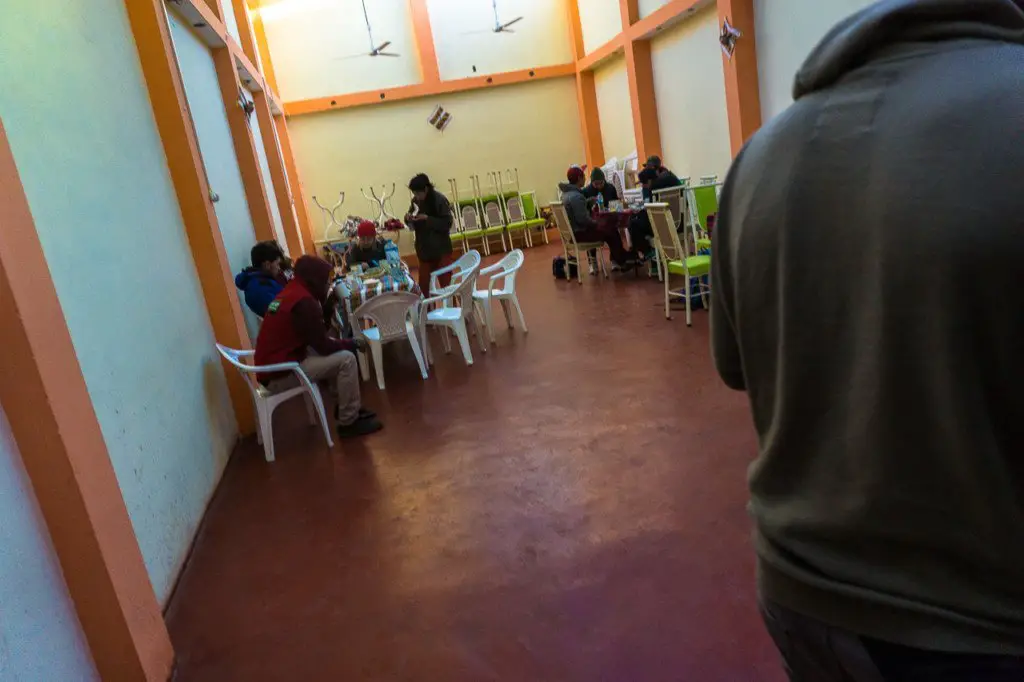
Reed Islands Tour
This is one of the most popular tours in Puno so there should be no problem booking this tour from any of the hundreds of tourism agencies in town. Cost is ~30 soles per ticket, which includes the boat ride to the island, and a short tour of how the people live. The tour leaves multiple times per day, every day. For those with more time, there are options to stay overnight as well in one of the villages.

The Uros People
The Uros people lived more inland in old times but were driven away from their homes and forced to take refuge on the lake with the arrival of the Incan empire. They fled to the islands within Lake Titicaca with its abundance of living reeds where many have lived since. Unlike the Quechua speaking descendants of the Incans (modern day Cusco and sacred valley), the people around Puno and Lake Titicaca speak Aymara, a completely different language.
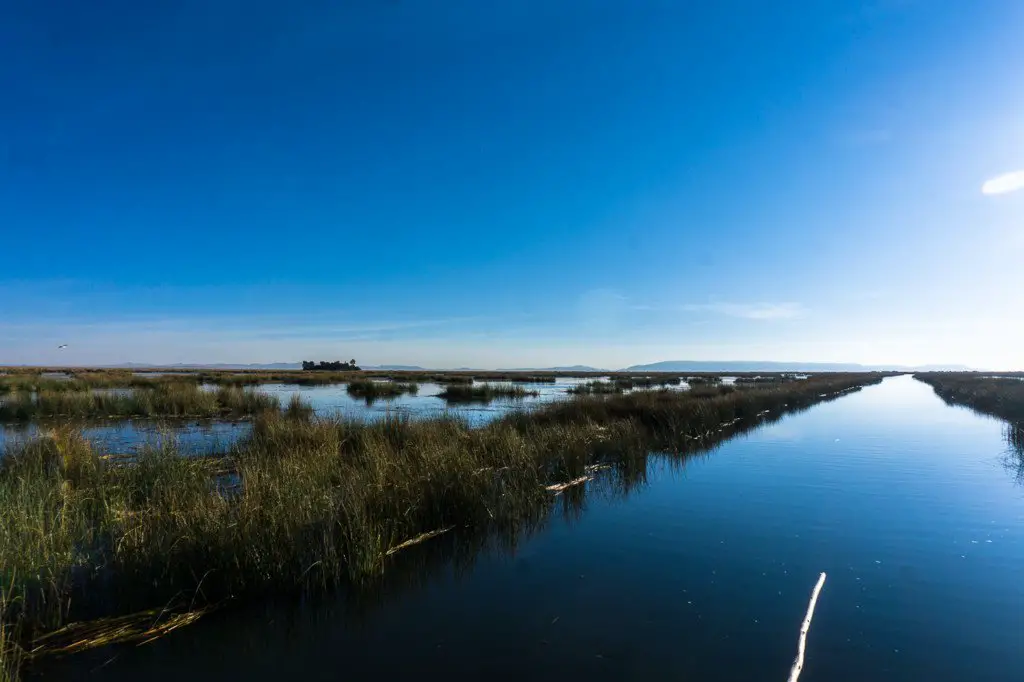
Upon arrival, the initial jump off the boat onto the reed island felt like I might jump through the reeds and into the lake. Nope. It was solid and was actually quite comfortable to walk in. It’s a bit crazy initially because you think, how could anything survive out here when I’m constantly worried that I might just fall through the reeds and into the lake when I’m sleeping. Nevertheless, we were soon taught by the village elders how things were done.

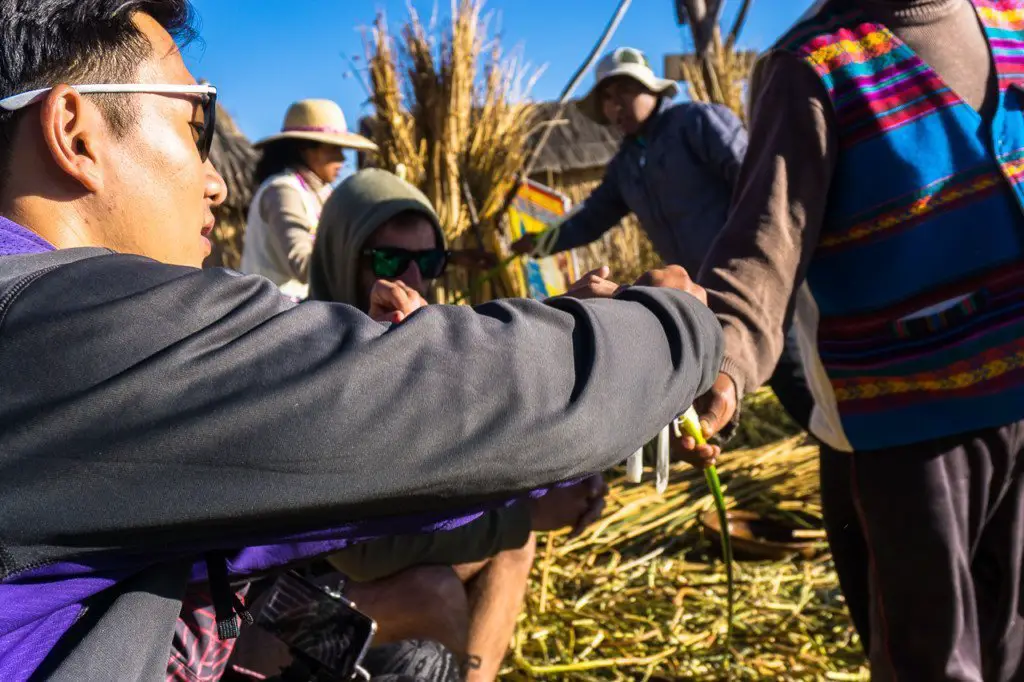
How the Uros people live
The Uros use the totora reed, which is plentiful along the edges of the lake, to make their homes, their furniture, their boats, and the islands they live on. Their boats, which are shaped like canoes, but with animal heads at the prow, are used for fishing and to bring visitors out to the islands. As reeds disintegrate from the bottom of the islands, which are four to eight feet thick, residents must add more to the surface, which is soft and occasionally spongy.
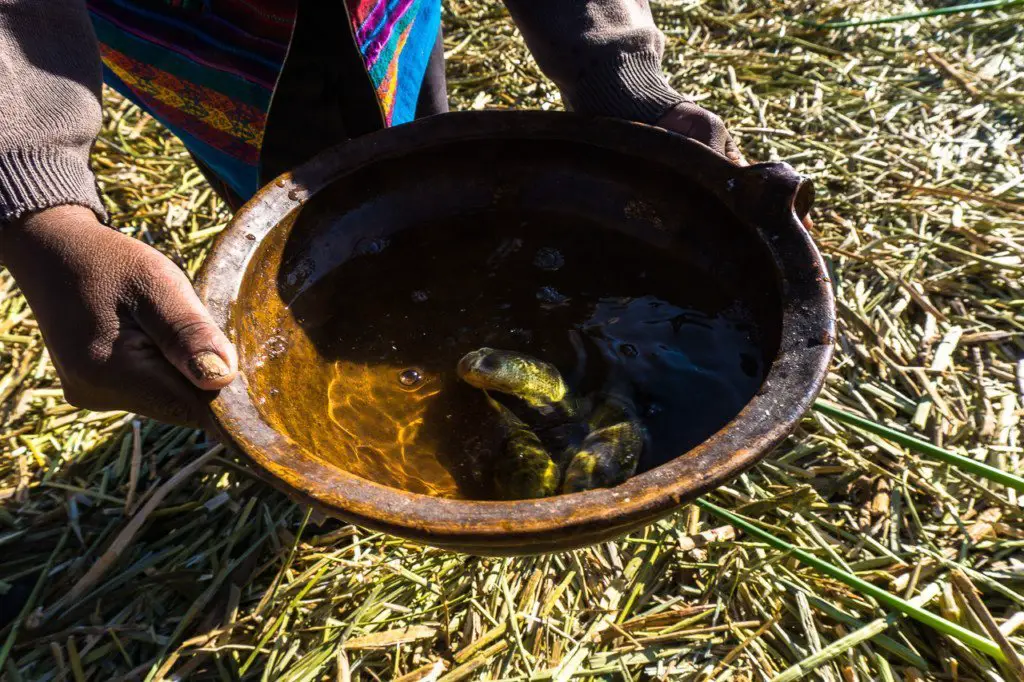
Each island has a collection of simple, reed constructed houses, and the biggest island has a watchtower: originally, the mobility of the islands was used as a defense mechanism. Even tiny outhouse islands have been created, and the ground roots of the outhouse islands help absorb the waste. Despite their traditional lifestyle, the Uros people are not against modern amenities. You can see most houses have solar panels and radios, with the men routinely carrying around even cell phones!
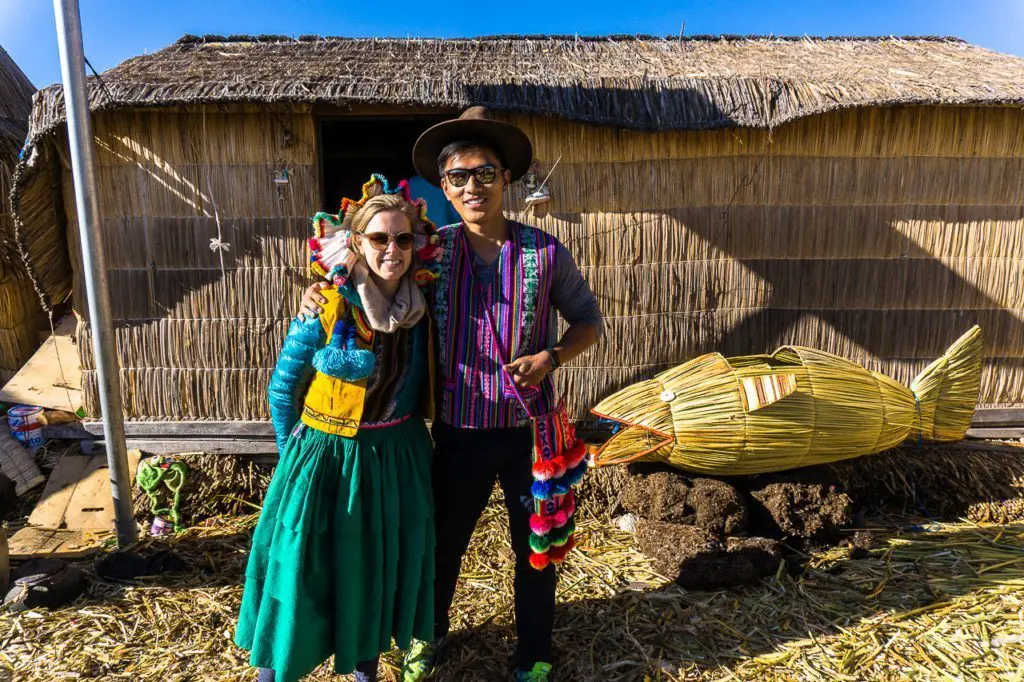
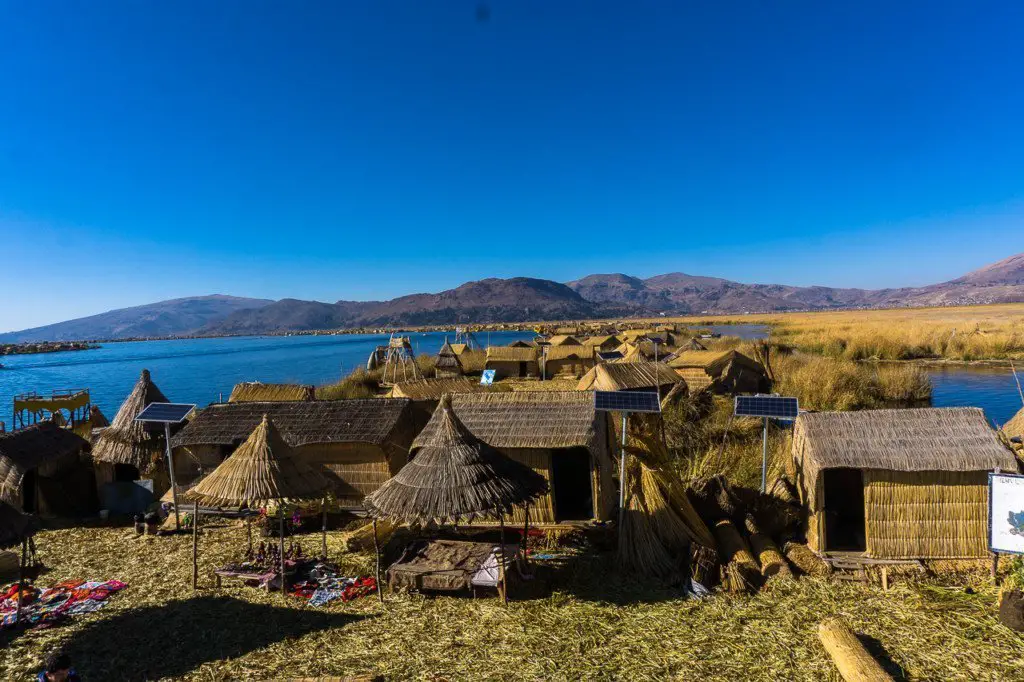
We were shown into their homes, equipped with beds and lights. It reminded me of the Masai villages in Kenya just because of how basic it was. When the tour was over, out came all the souvenirs they were eagerly waiting to sell to us. In the past decade or two, the Uros people have been able to successfully monetize tourism. Good for them. As far as prices go, the stuff here was not a bad deal.
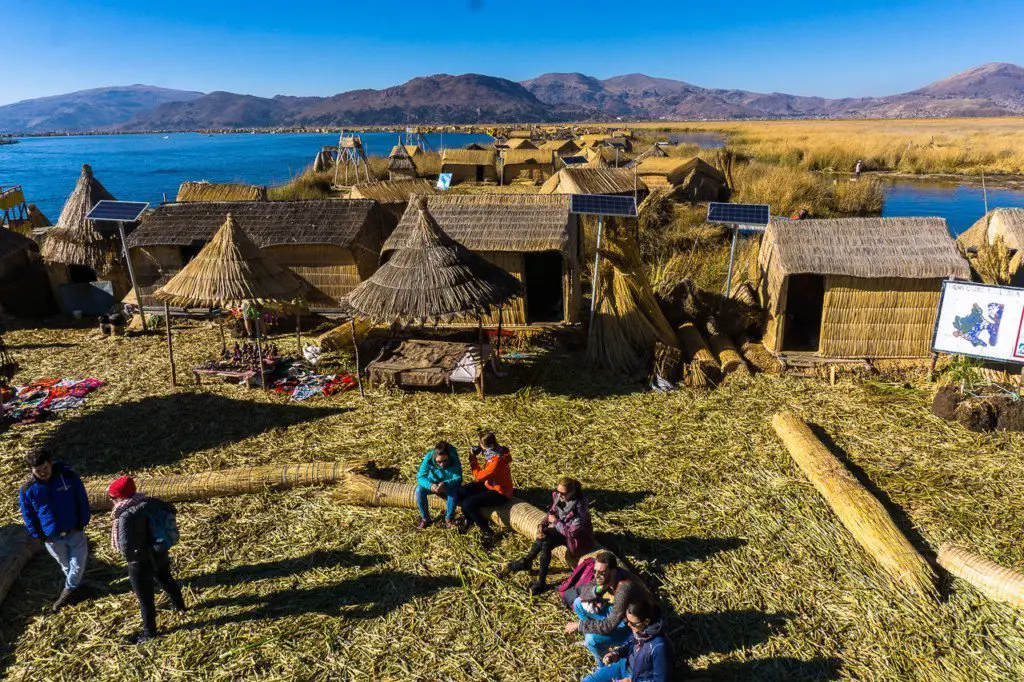
All in all, the tour lasted about 3 hours.
Peru Bolivia Border
Those that chose to stay the night in Puno checked into their hostels after the Uros Island tour. For me and the rest, is was time to cross into Bolivia. The bus ride was ~3 hours before we finally arrived. I wrote another post in detail about crossing into Bolivia on land from Peru. For most Western countries, it is free and quick. For Americans, it is a huge pain in the ass to complete.
If you are American and reading this post, make sure to get ALL the details straight before making this crossing otherwise you WILL be screwed. Warning you now!
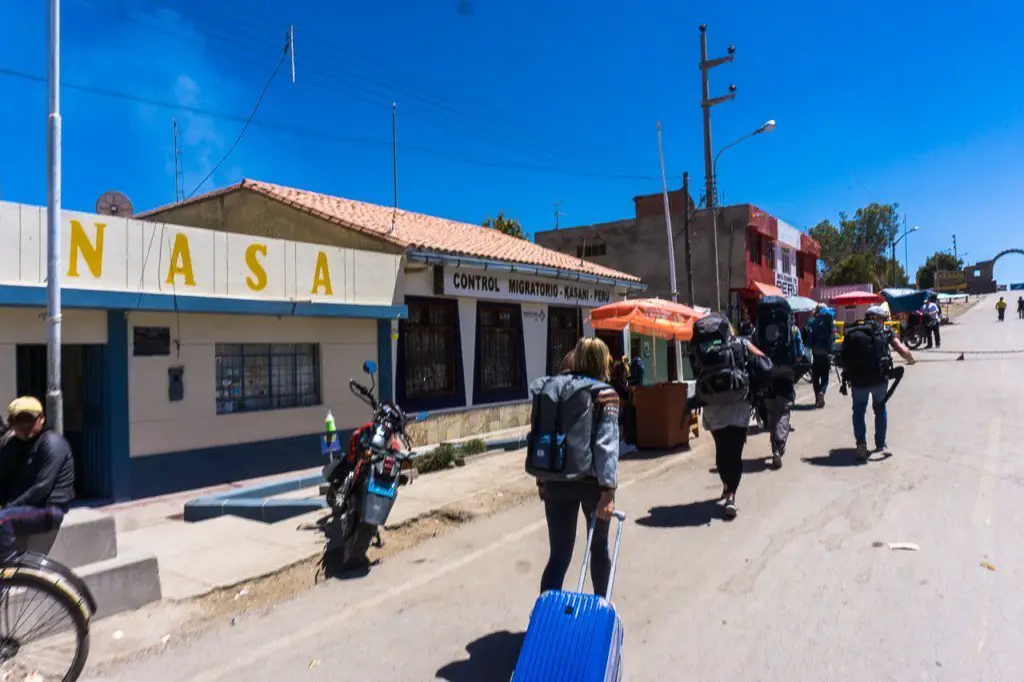
Copacabana and Isla Del Sol
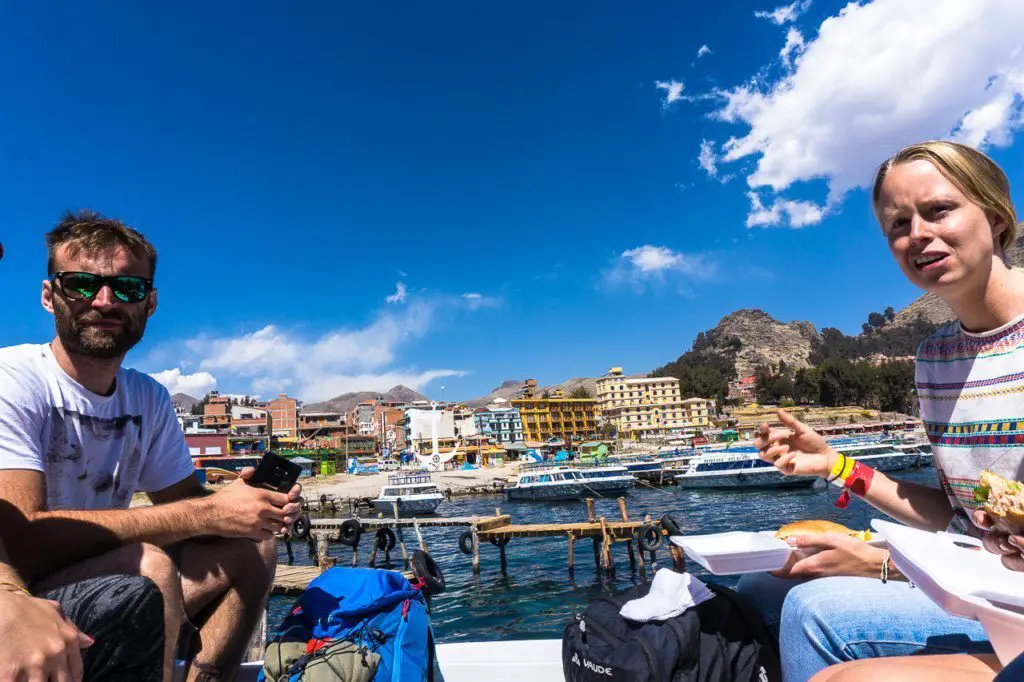
After crossing the border, it was a short 20 minutes to the lakeside town of Copacabana. This town was much smaller and had a much more chilled out vibe than Puno. If I had more time, I would have stayed in Copacabana a night as the views of the lake are gorgeous from here. We grabbed a quick lunch before heading on a boat to Isla Del Sol for our afternoon tour
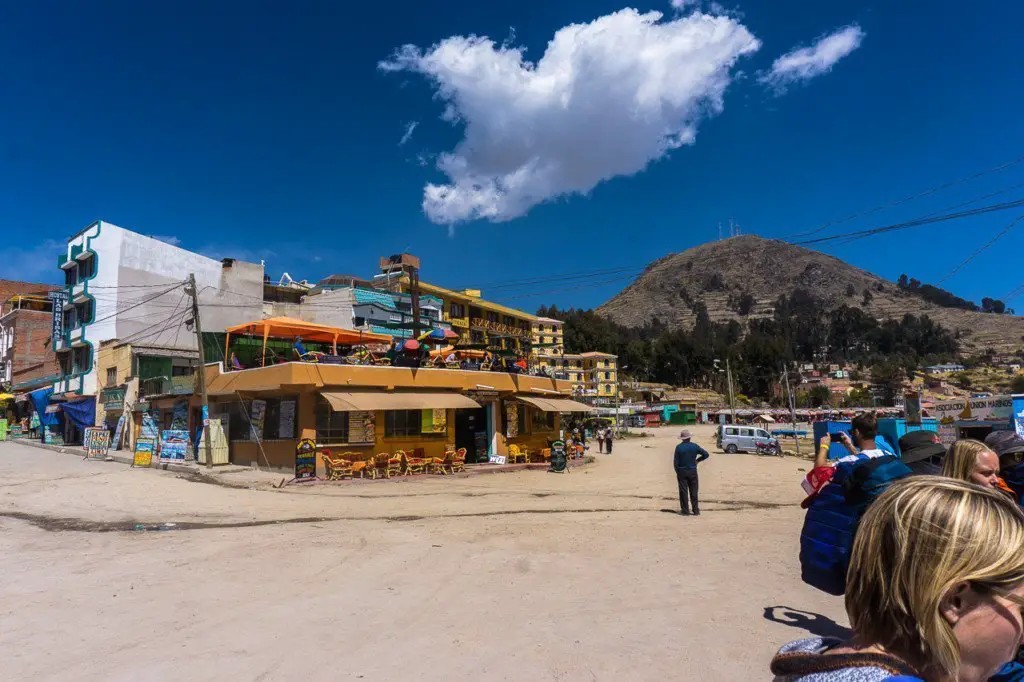
The Isla del Sol was a major pilgrimage destination in the Inca Empire. Situated on the Bolivian side of the lake with regular boat links to the Bolivian town of Copacabana, Isla del Sol (“Island of the sun”) is one of the lake’s largest islands.
Our boat ride lasted just under an hour. Geographically, the terrain on this island is harsh. It’s a rocky, hilly island with no paved roads or cars. it is a rocky, hilly island. There are no motor vehicles or paved roads and the main economic activity of the approximately 800 families on the island is farming, with fishing and tourism augmenting the subsistence economy.
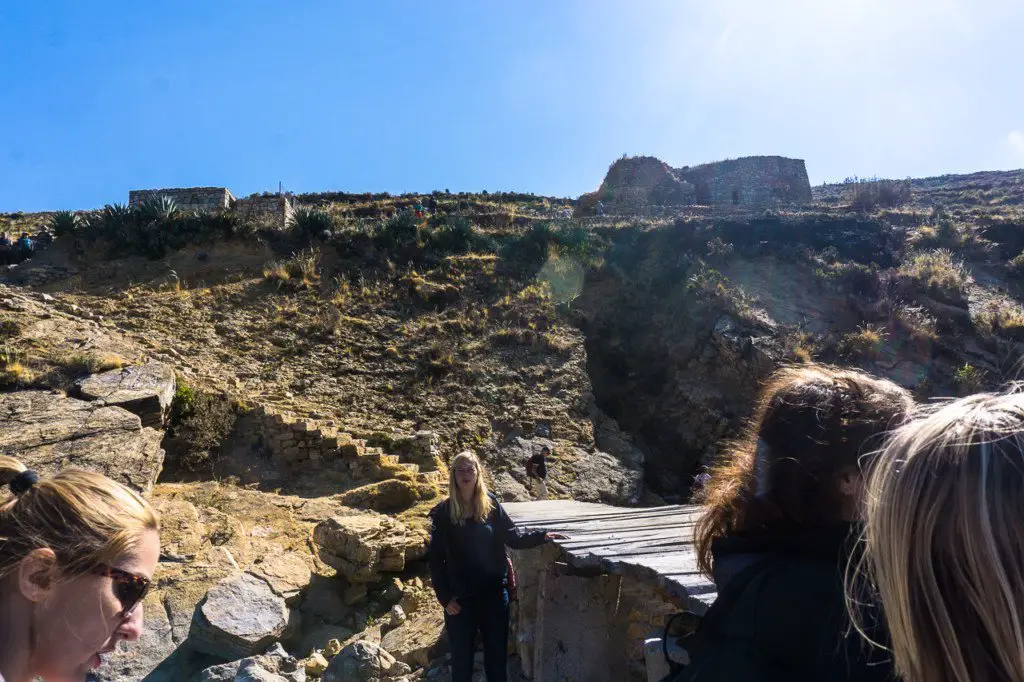
Isla Del Sol Hike
The boat trips you off on the north part of the island. It’s not as much of a “tour” as it is a self guided walk. The hike is not that difficult but keep in mind Lake Titicaca is at 3500m so the air is thin and an easy hike can quickly turn into the most difficult of hikes.
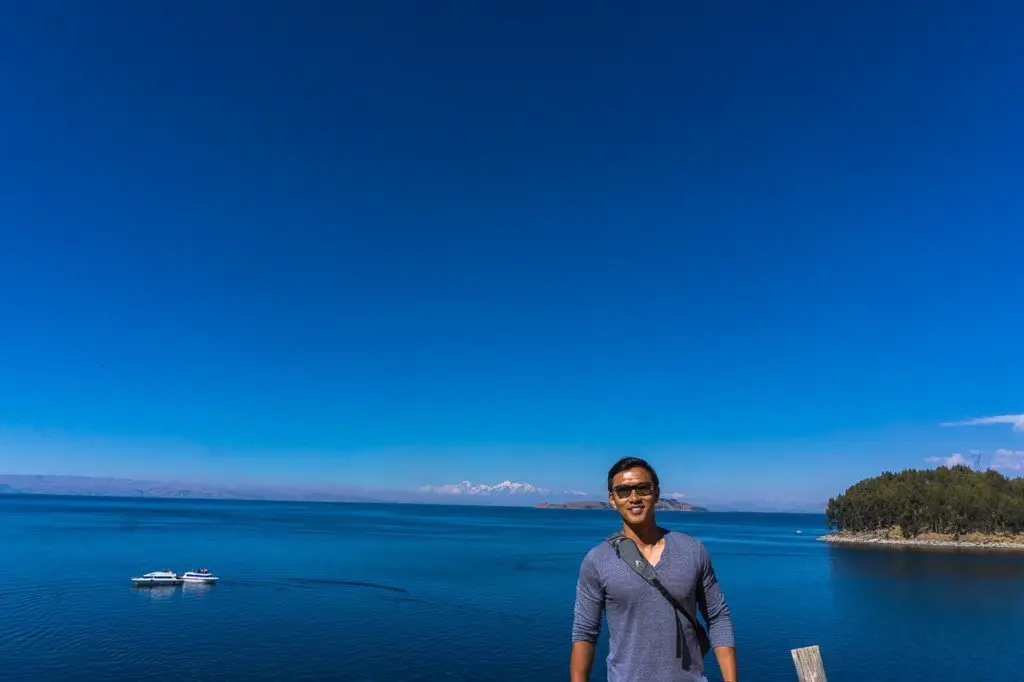
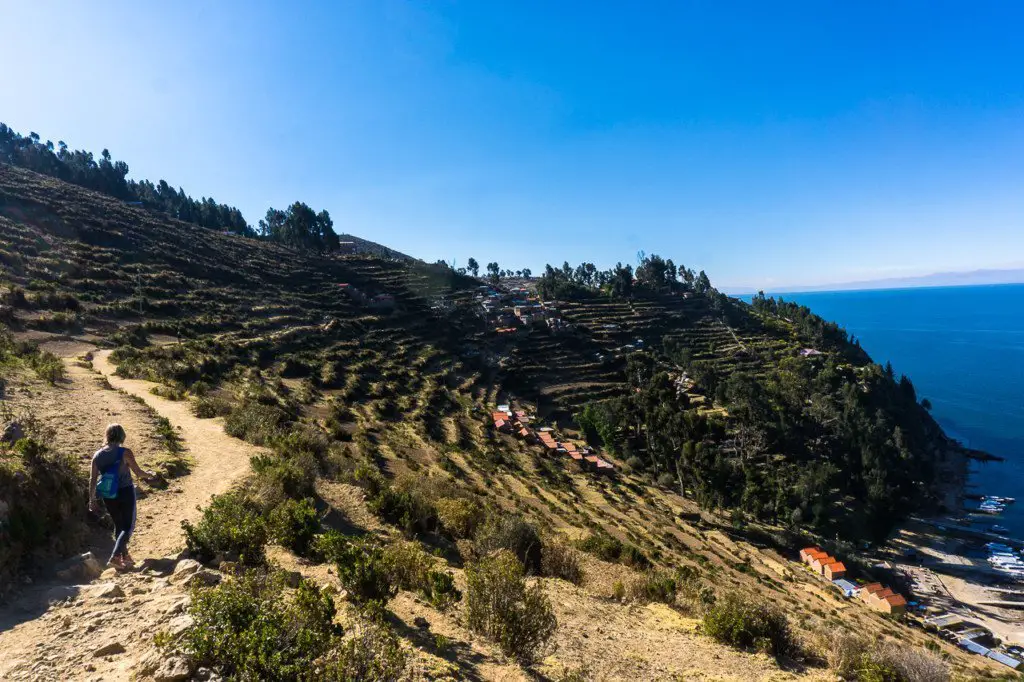
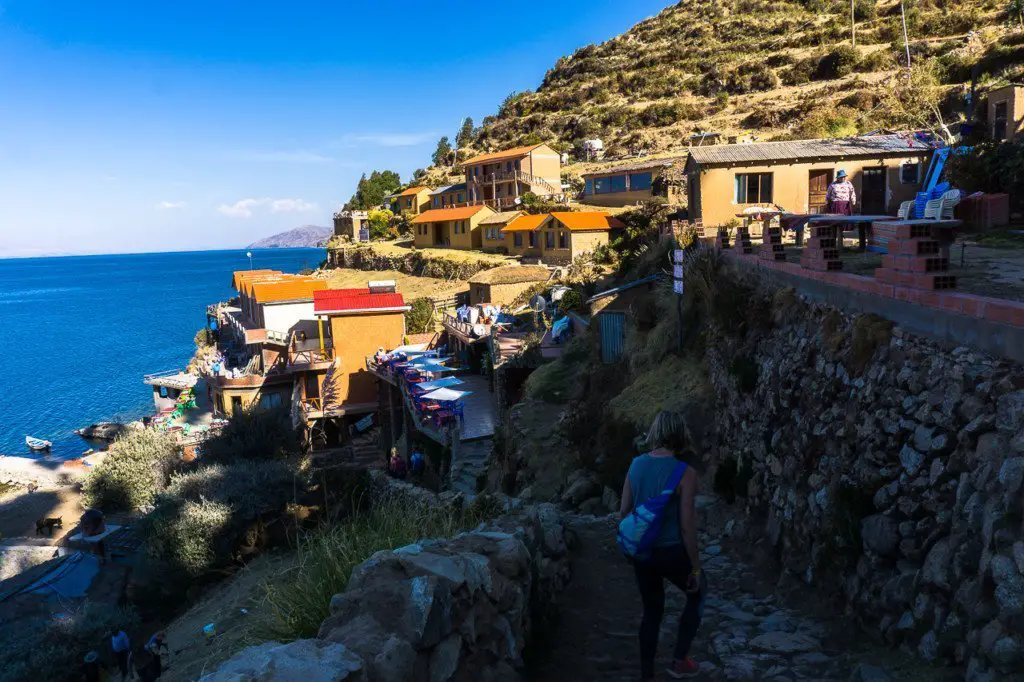
Nevertheless, the hike up is no more than 45 minutes and the views are absolutely beautiful. From the top, you can really get a good sense of just how big this lake is. It’s like an ocean; the water goes out as far as the eyes can see. For it to be so high up is even more impressive.
There’s also the option to stay on Isla Del Sol for a night for those that want to stay off the beaten path and enjoy the rustic setting.

Copacabana to La Paz
From Copacabana, it was a direct shot to La Paz, Bolivia. The scenery in Bolivia is incredible and you can witness a small flavor on the drive to La Paz. The drive was mostly uneventful until we got to the outskirts of La Paz to the city of El Alto.
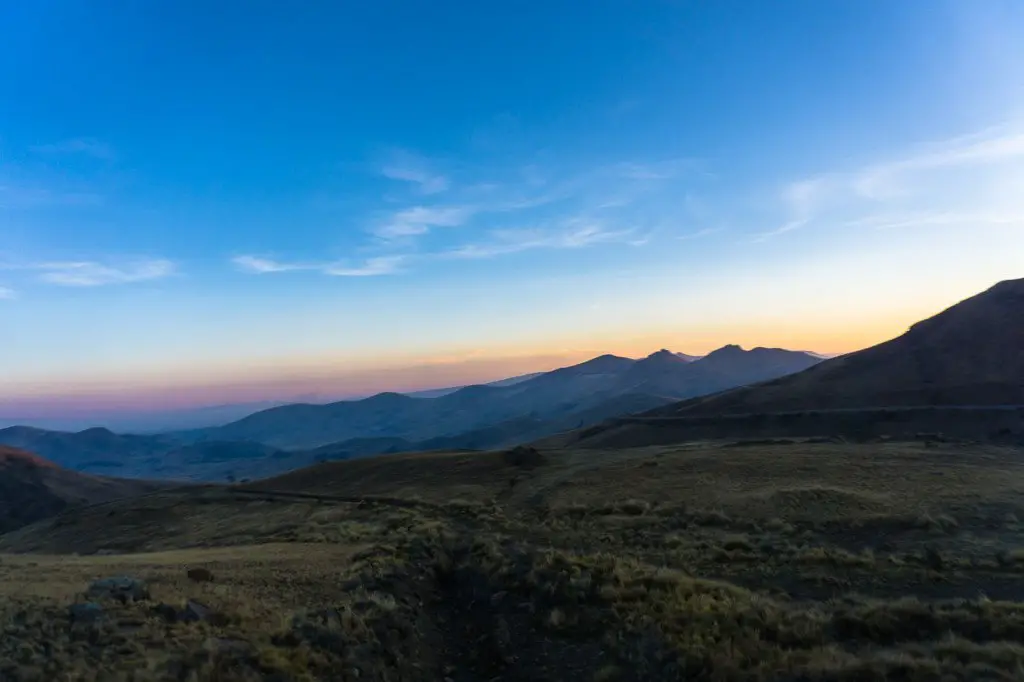
El Alto is in fact the fastest growing city in the world believe it or not. However, fastest growing city in a 3rd world country like Bolivia means a lot of disorder and major infrastructure issues.
Looking out my window at night, the town of El Alto at night was like something out of the twilight zone. There were hardly any street lights, no roads were paved, stray dogs running everywhere, it looked a bit like a scene out of a zombie movie.
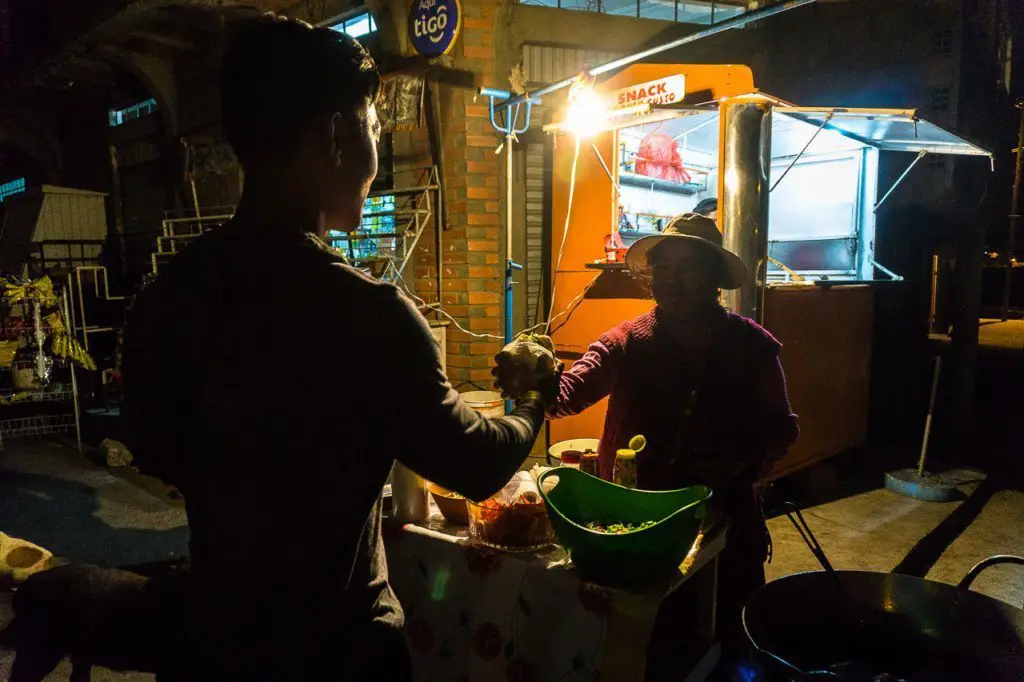
We finally arrived in La Paz around 10:30pm. In La Paz, Bolivia Hop will drop all their customers off at hotels/hostels located in the centro historico free of charge. We stayed the night at Hotel Rosario before continuing on to the stunning Uyuni Salt flats the next morning.





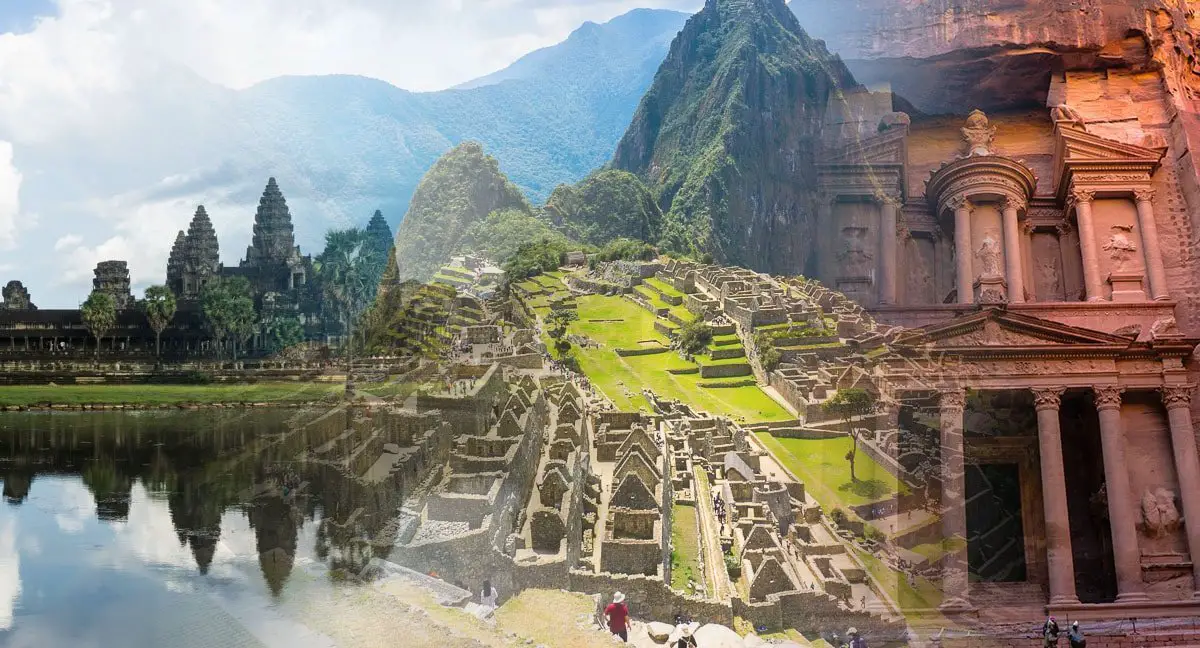

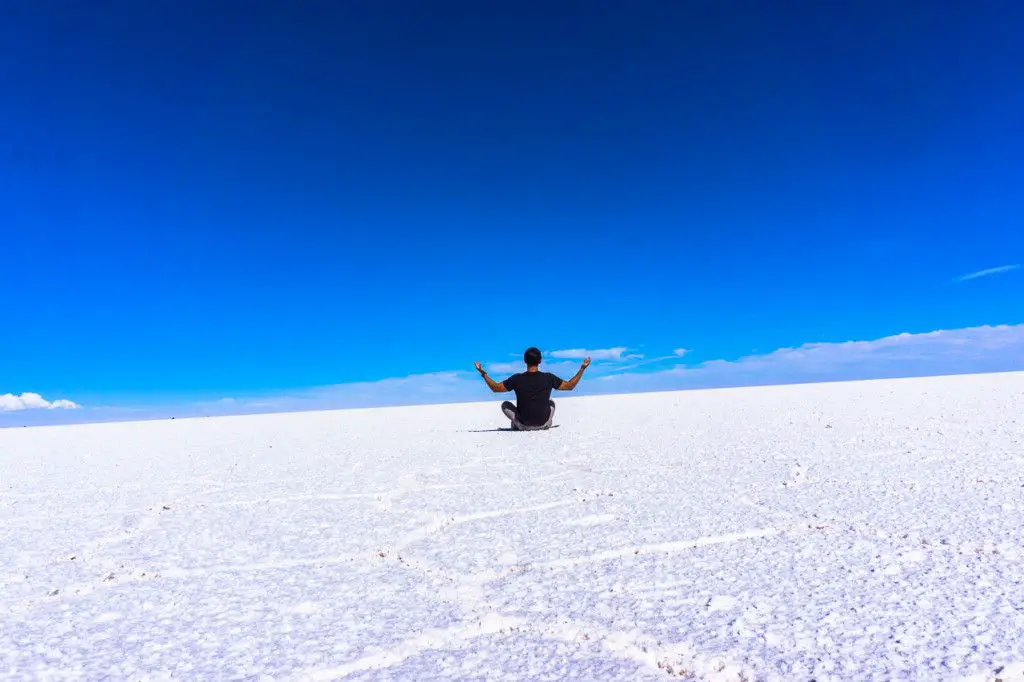
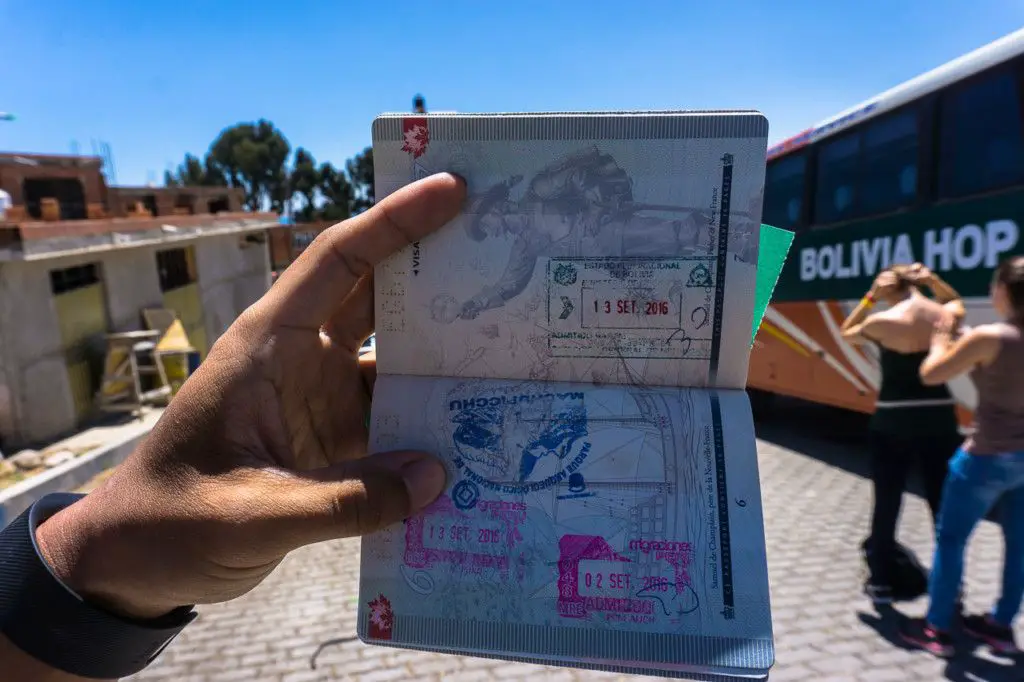
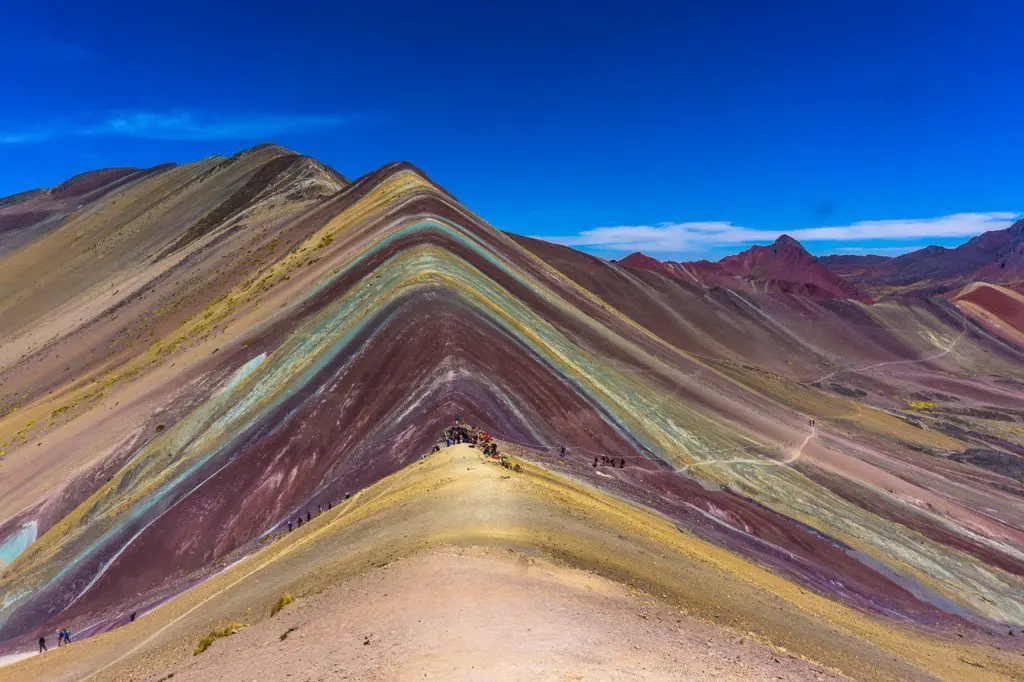
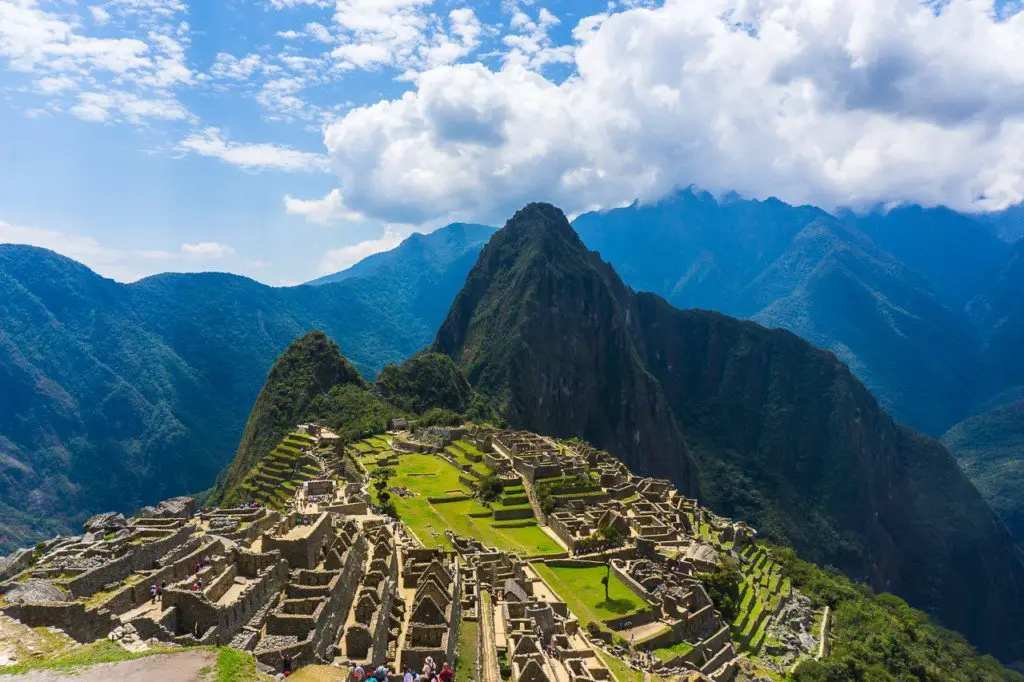
Hey, were you able to leave your luggage on the Bolivia Hop bus while on short tours at Puno and Copacabana?
Your itinerary is super helpful, thanks!
Yes for sure. That is what the hop bus is for!